Violins Of Hope Program Notes
By Laurie Shulman © 2019 First North American Serial Rights Only
Paul Schoenfield identifies strongly with his Jewish heritage. Klezmer Rondos celebrates the overlooked importance of flute in Eastern European klezmer bands, fusing raucous popular culture with concert music.
William Schuman’s Judith, after the Biblical tale, was a Louisville Orchestra collaboration with the legendary choreographer Martha Graham. Because the original choreography has been lost, the LO has commissioned this new version from Andrea Schermoly for performance with the Louisville Ballet. (SATURDAY ONLY)
The haunting strains of the title music to Steven Spielberg’s Schindler’s List leads off these Three Pieces from John Williams’s Oscar-winning score. The other two pieces recall suffering in the Warsaw ghetto, and somber remembrance today of the Holocaust.
Cinema’s beloved Audrey Hepburn provided the impetus for Michael Tilson Thomas’s From the Diary of Anne Frank. He and Hepburn selected favorite passages for the text, and Tilson Thomas composed with the rhythms and cadences of Hepburn’s voice in crafting this orchestral showpiece with narrator.
Klezmer Rondos [Movement II] (1989)
Paul Schoenfield
Michigan-based Paul Schoenfield has lived extensively in Israel. That geographical spread sums up Schoenfield in a nutshell: diverse, well-traveled, and eclectic. He was educated at Converse College in South Carolina, Pittsburgh’s Carnegie Mellon University, and the University of Arizona, where he completed a Doctor of Musical Arts in composition in 1970, studying with the American composer and pianist Robert Muczynski. An excellent performer himself, Schoenfield studied piano with Ozan Marsh and Rudolf Serkin, and many of his most successful compositions are those for solo piano and chamber music with piano.
Another important thread in his compositions has been a connection to his Jewish heritage. Klezmer Rondos is a prime example, merging the popular music of Central European klezmer bands with today’s concert music – much in the same way that composers as different as Haydn, Brahms, Ravel, and Bartók fused Gypsy-style into their own art music.
Schoenfield wrote Klezmer Rondos for flutist Carol Wincenc with funding from an NEA Consortium Commission grant. His original concept was a chamber ensemble featuring flute, but in 1995 Schoenfield expanded the piece to full orchestra with solo flute and solo male vocalist.
Although clarinet is the most common featured instrument associated with klezmer, Schoenfield knew that both violin and flute played important roles in these traditional ensembles. He also wished to incorporate the role of the badchonim, a klezmer cross between jester, emcee, singer, and entertainer often featured at Jewish weddings in the old country. The composer elaborates:
The music of Klezmer Rondos employs the philosophy of the badchonim (merry-makers), vocal precursors of klezmer musicians. (‘Klezmer,’ incidentally, is a corruption of the Hebrew kle-zemer: musical instruments.) In his treatise on Jewish music, A.Z. Idelsohn states, ‘It was a custom of old that though secular song and instrumental music were prohibited in Israel after the destruction of the Temple, both were permitted at weddings and on Purim. It was even considered a merit to sing and dance and make merry in order to cheer the bride by praising her beauty and good qualities.’ In the Talmud, professional badchonim are mentioned, whose task it was to sheer the sad and make peace between enemies.
The musical elements used in Klezmer Rondos are those generally associated with Klezmer music, namely Hasidic-style songs and dances, Eastern European modes, marches, and Jewish folk sons. The last movement, written in Yiddish theater song style, is based on the Yiddish poem by M. Wirte, Mirele. As the tenor saxophone trolls the text of the poem, the flute describes the action of its central character, a girl named Mirele.
(In Wirt’s verses, Mirele is a maiden so lovely that she can afford to reject all her suitors. The poem warns that she will live to regret that decision in her old age, after her beauty has faded.)
Schoenfield’s piece uses Eastern European modal scales, some elements of Gypsy style, and Jewish folk tunes and dances. He also incorporates some Romanian folk elements. They add up to a stylistic hodgepodge that somehow fuses into delightful entertainment music.
The score calls for a klezmer band [B-flat clarinet, E-flat clarinet, two trumpets, alto saxophone (doubling soprano saxophone), tenor saxophone, trumpet, cornet, trombone, tuba, and percussion], piano, solo flute, and strings.
Judith: A Choreographic Poem
William Schuman
Saturday Performance Only
William Schuman (Aug 4, 1910 – Feb 16, 1992) is a prime example of an important mid-20th century composer who has been all but eclipsed by the popularity of Gershwin, Copland, and Bernstein. Arguably America’s most distinguished 20th-century symphonist, Schuman was – at first – an unlikely candidate for that august designation. As a boy he studied violin, but he was more focused on popular music and jazz. He appeared headed toward a career as a popular songwriter, collaborating extensively with Frank Loesser (who went on to fame with such Broadway classics as The Most Happy Fella and Guys and Dolls).
Schuman’s world changed at age nineteen when he heard the New York Philharmonic perform music by Schumann, Wagner, and Kodály. The next day, Schuman withdrew from NYU, quit his part-time job, and registered for courses in harmony and counterpoint at Malkin Conservatory. He advanced rapidly, supporting himself through jazz band arrangements and work in his father’s printing business. In 1935 he earned a degree from Columbia, then studied privately with Roy Harris, then among America’s most prominent composers.
When Aaron Copland drew Schuman’s music to the attention of the Boston Symphony’s conductor, Serge Koussevitzky, Schuman got his big break. Koussevitzky was a champion of new music and became an enthusiastic advocate, conducting a performance of Schuman’s Second Symphony in 1939 and leading premières of four other Schuman compositions between 1939 and 1943.
William Schuman went on to a stellar career, including two Pulitzer Prizes in music and the gold medal from the American Academy of Arts and Letters in 1982. His academic career was equally distinguished: ten years on the faculty of Sarah Lawrence College (1935-45), after which he led the Juilliard School from 1945 to 1962. During his tenure, he fostered the establishment of the Juilliard Quartet as ensemble-in-residence, appointed many distinguished colleagues to the composition faculty, and created Juilliard’s dance division.
He left Juilliard to assume the presidency of Lincoln Center, then under construction as Manhattan’s new center for the performing arts. Schuman’s Eighth Symphony was premiered during the New York Philharmonic’s inaugural season at Lincoln Center.

Judith was commissioned by the Louisville Orchestra for the legendary choreographer Martha Graham. Graham danced the title role in the premiere on 4 January 1950. Robert Whitney conducted. The ballet scenario is based on the tale of Judith in the Apocrypha. The Assyrian general Holofernes had deprived the Israelites of their water supply. Judith, a widow, prayed for God to give her, a woman, the strength and courage to save her people and restore their water.
She cast off her widow’s weeds and dressed herself in seductive clothing, then went to Holofernes’s military camp. After three days, she found her way to his tent. Besotted by her beauty, he ordered a feast prepared, and drank wine excessively. Judith took advantage of his inebriation to decapitate him. Her courageous act restored water and joy to her people. The bloody scene has been immortalized by many painters, most notably Michelangelo in the Sistine Chapel.
Schuman’s score follows the five principal scenes in the ballet. They share musical ideas set forth in the opening Adagio, which illustrates the suffering and desperation of the thirsty Israelites. Judith prepares herself for travel to the enemy camp with chirping woodwinds, jagged brass exclamations, and some jazzy rhythms. An oboe solo heralds a quieter section, as Judith patiently awaits her best opportunity to approach Holofernes without being detected as an infiltrator. Holofernes’s debauched banquet begins with pizzicato strings, driving to a wild climax – the beheading – as the orchestra’s brass and timpani join the revelry. In a solemn procession, Judith departs from the camp holding the general’s severed head. At the end, her people are able to celebrate their deliverance by the brave widow.
The score calls for piccolo, two flutes, two oboes, English horn, two clarinets, bass clarinet, two bassoons, contrabassoon, four horns, two trumpets, three trombones, tuba, timpani, bass drum, snare drum, cymbal, xylophones, piano, and strings.
Three Pieces from Schindler’s List
John Williams
Steven Spielberg’s epic 1993 cinematic drama, Schindler’s List, made a wallop of an impact on anyone who saw it. The true story of Oskar Schindler, who saved the lives of approximately 1000 Jews by employing them in Nazi factories, remains shattering whether one reads about it or sees Spielberg’s film. Who can forget the image of the little girl in the red coat? Equally haunting is John Williams’s theme from the film, which was recorded on the original soundtrack by Itzhak Perlman. The soundtrack won an Oscar for Mr. Williams at the 1994 Academy Awards. The title music, which opens these Three Pieces, is the score’s most famous excerpt.
“Jewish Town – Krakow Ghetto, Winter ‘41″ begins with a plaintive violin solo, before the orchestra drifts in to flesh out Williams’s portrait of the ghetto’s bleak conditions. The desolation escalates to hopelessness. Finally, “Remembrances” looks back upon the Holocaust from a sorrowful modern vantage point, with a fleeting reference to the title music.
Williams scored these three pieces for three flutes (third doubling piccolo and alto flute), oboe, English horn, three clarinets (third doubling bass clarinet), two bassoons, contrabassoon, three horns, three trombones, timpani, percussion, harp, celesta, solo violin, and strings.
From the Diary of Anne Frank for narrator and orchestra (1990)
Michael Tilson Thomas
Michael Tilson Thomas has had a distinguished career as a conductor, serving as principal conductor of the London Symphony Orchestra from 1988-95 and leading the San Francisco Symphony since 1995. He also founded Miami’s New World Symphony. A steadfast champion of new music, he has been a pioneer in reinventing the concert experience, and has worked on many multimedia projects.
Tilson Thomas is himself a composer of note, and is drawn to literature. Three of his five works for soloist and orchestra have literary origins: Whitman Songs (1999), Poems of Emily Dickinson (2002) and From the Diary of Anne Frank.
The legendary British actress and humanitarian Audrey Hepburn was the impetus for this work. She had thought of using Anne Frank’s words in music. A great proponent of UNICEF, she facilitated UNICEF’s commission from Maestro Tilson Thomas. She and the composer selected favorite parts of Frank’s text, then she sent him a recording of her reading those excerpts. He has said that he composed to reflect the rhythms and lilt of her voice, but also tapping into his own Yiddish heritage. He describes From the Diary of Anne Frank as a big set of symphonic variations, and a showpiece for virtuoso orchestra.
Tilson Thomas led the premiere in Philadelphia in March 1990. The narrator was Audrey Hepburn, to whom the score is dedicated. We hear the revised version, from 1992.
The score calls for three flutes (all doubling piccolo), two oboes, English horn, two clarinets, bass clarinet, two bassoons, contrabassoon, four horns, three trumpets, three trombones, tuba, timpani, percussion [vibraphone, crotales, glockenspiel, marimba, xylophone, gong, tam-tam, suspended cymbals, crash cymbals, snare drum, field drum, large and small bass drums, chimes, triangle, tambourine, high and low tom-toms, bongos, woodblock, metal pipe, and metal plate], harp, piano, narrator, and strings.





